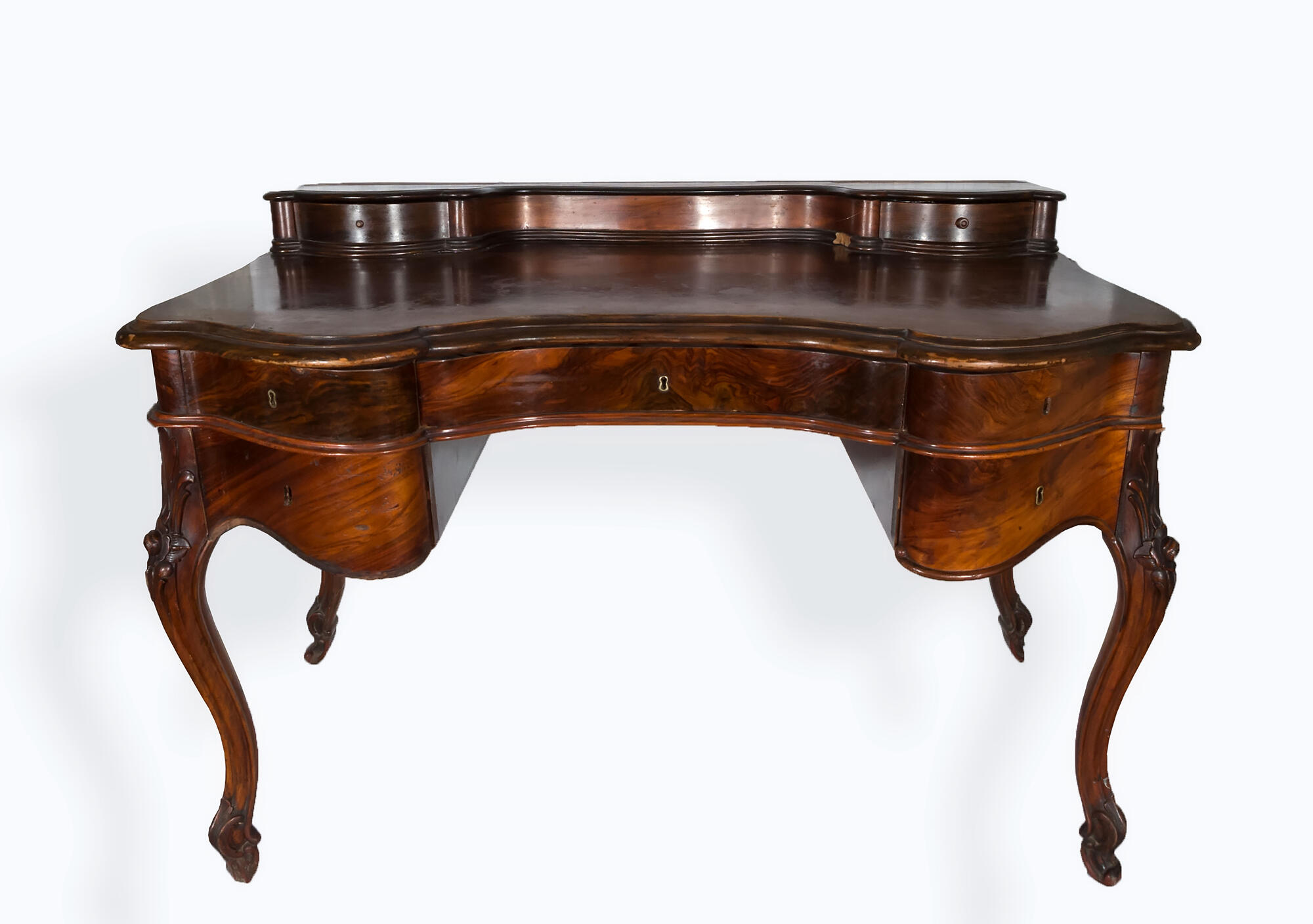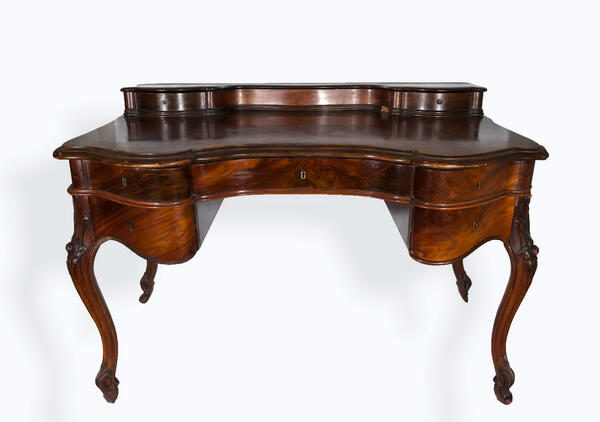According to family legend, this writing desk stood in the house of the Boratynskiy family in the Kaimary estate near Kazan. The poet Evgeniy Boratynskiy was connected to this place through his wife Anastasia Engelhardt. They married in 1826 and received as a dowry the old-fashioned Kaimary estate, which was near Kazan.
To settling various estate related affairs the Boratynskiy family would often come to Kazan from Moscow in the 1820s – 1830s. But the first impressions Boratynskiy from Kazan life were ambivalent: ‘I get acquainted with the society here, not hoping to find any pleasure in it’, - wrote the poet.
But the people he met gradually changed his attitude towards the city. Boratynskiy wrote to a friend: ‘You know, nevertheless I think a provincial city is livelier than the capital. When I say “livelier”, I do not mean it is more pleasant; but there is something here that you can’t find in Moscow: flurry of activity. The conversations of some of our guests were very entertaining to me. Everyone talks about his affairs or the affairs of the governorate, berates or praises them… The governorates show more civic consciousness, more passion, more elements of politics and poetry’.
The table from the Boratynskiy Museum’s collection is in the ornamental style of Louis XV. It is distinguished by its elegance and smoothness. The legs of the table are smoothly bent, complementing the lines of the body’s frame. Its unusual structure is also a distinctive feature. It was made as a console piece of furniture, so the table had to be set with its undecorated side against a wall.
To settling various estate related affairs the Boratynskiy family would often come to Kazan from Moscow in the 1820s – 1830s. But the first impressions Boratynskiy from Kazan life were ambivalent: ‘I get acquainted with the society here, not hoping to find any pleasure in it’, - wrote the poet.
But the people he met gradually changed his attitude towards the city. Boratynskiy wrote to a friend: ‘You know, nevertheless I think a provincial city is livelier than the capital. When I say “livelier”, I do not mean it is more pleasant; but there is something here that you can’t find in Moscow: flurry of activity. The conversations of some of our guests were very entertaining to me. Everyone talks about his affairs or the affairs of the governorate, berates or praises them… The governorates show more civic consciousness, more passion, more elements of politics and poetry’.
Boratynskiy’s Kazan acquaintances included historian Nikolai Artsybashev, mathematician Nikolay Lobachevsky, and Ivan Velikopolskiy, a literary figure. He was also a frequent visitor to the house of Professor Karl Fuchs and his wife, the writer Alexandra Fuchs, who was one of the first to work in the field of ethnography and to study the life of the ethnic groups of the Kazan Governorate.
As for creativity, Boratynskiy, as always, was humble: ‘Kazan was not too inspirational for me’. However, it was here that he wrote the elegy ‘On the death of Goethe’, two epistles to poet Nikolay Yazykov, a ballad ‘Madonna’ and his first and last prosaic experience - the story ‘Ring’.
As for creativity, Boratynskiy, as always, was humble: ‘Kazan was not too inspirational for me’. However, it was here that he wrote the elegy ‘On the death of Goethe’, two epistles to poet Nikolay Yazykov, a ballad ‘Madonna’ and his first and last prosaic experience - the story ‘Ring’.
The table from the Boratynskiy Museum’s collection is in the ornamental style of Louis XV. It is distinguished by its elegance and smoothness. The legs of the table are smoothly bent, complementing the lines of the body’s frame. Its unusual structure is also a distinctive feature. It was made as a console piece of furniture, so the table had to be set with its undecorated side against a wall.


